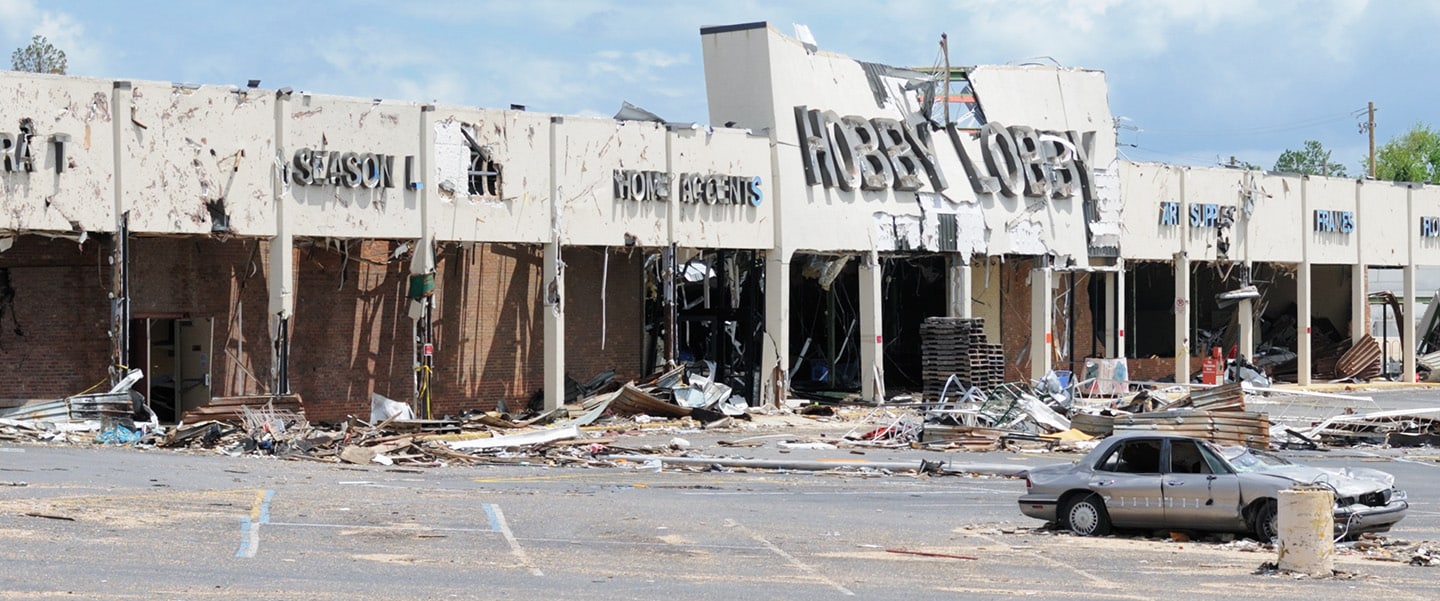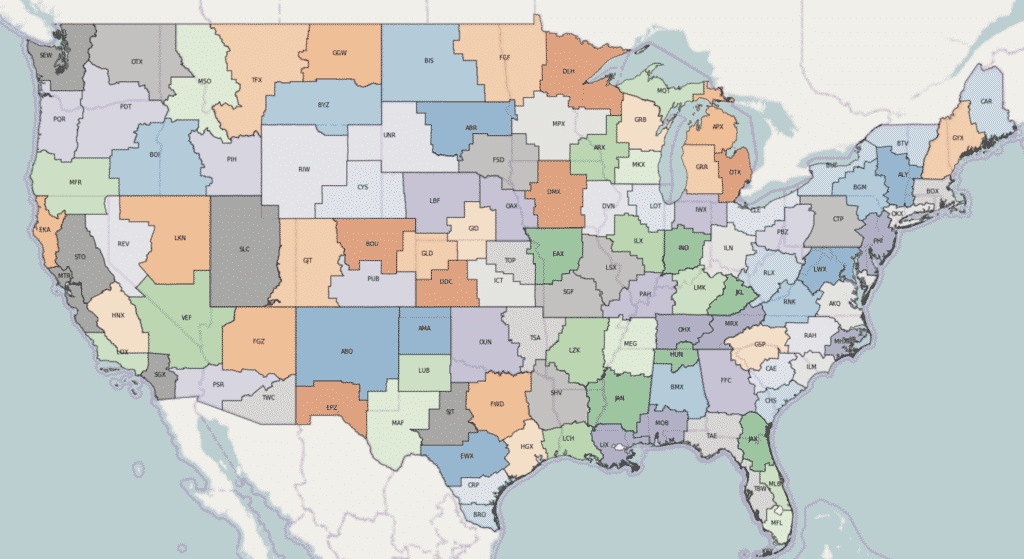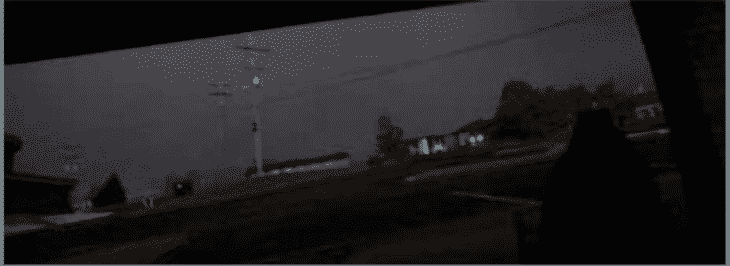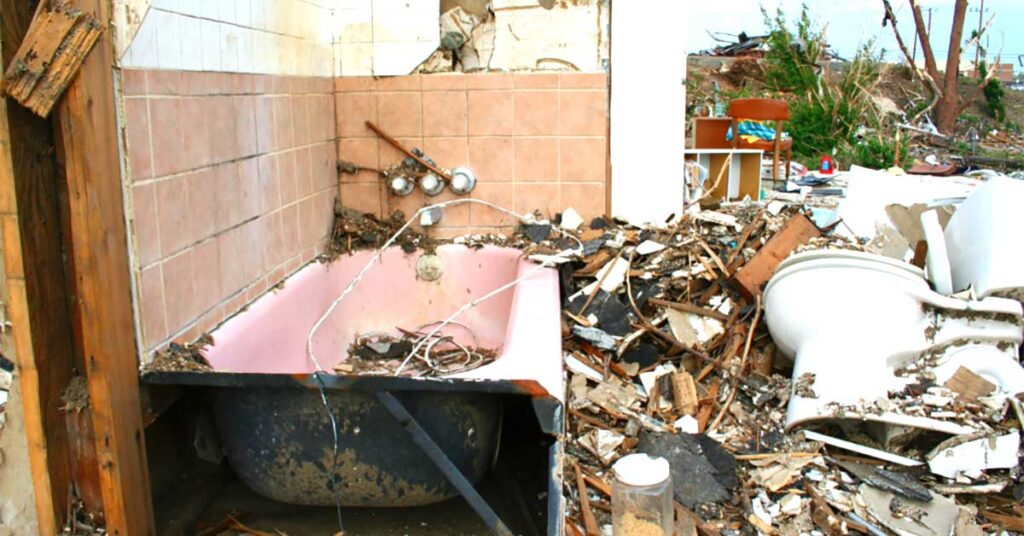CATEGORIES:
How Businesses Can Learn from OSHA's Hazard Alert Letter to Amazon
May 18, 2022

Imagine working in a warehouse with the sound of hailstones pounding the roof, while thunder periodically roars. You check the radar on your smartphone but it is just a mass of confusing colors. Apprehension rises among the staff as something feels “off.” Suddenly, the sound of wind becomes deafening as the west wall begins to move…
Given news reports pertaining to the Occupational Safety and Health Administration’s (OSHA) recent pronouncements stemming from December’s six tornado deaths at an Amazon Illinois warehouse the same night, I thought it would be helpful to provide business executives with some information as to how to protect your employees and everyone on your site effectively from tornadoes and other severe storms.
There are three aspects to effective storm safety. They are:
1. A storm warning specifically tailored to your location and the unique requirements of your business.
2. A method of instantly communicating the warning to your team.
3. Shelters that are quickly accessible to everyone.
The National Weather Service provides warnings for tornadoes, hurricanes, and severe thunderstorms. Severe thunderstorms are defined as hail 1-inch in diameter or larger, or winds of 60 mph or stronger, or both. Sometimes, the NWS warnings are issued in implausible ways because of political boundaries and their internal “county warning areas” (CWA). A map below of the National Weather Service’s country warning areas shows the unique three-letter identifiers for each NWS office. One office is not allowed to issue a warning across the into another’s CWA.

The NWS does not provide warnings of lightning or other weather conditions that may be important to your business. Their statistics reveal that seven out of ten NWS tornado warnings are false alarms. Those can be extremely expensive to companies running assembly lines or other sophisticated processes when they prompt an emergency shutdown.
To receive lightning alerts, unique types of weather warnings, or site-specific warnings, companies must turn to commercial weather companies specializing in providing business-grade warning services. These services come from companies like “AccuWeather for Business,” StormGeo, DTN, and others.
Having retired from AccuWeather, I am most familiar with their SkyGuard® service. Regardless of which storm warning company you may choose, there are some important things to consider.
If you hire a commercial weather company for tailored warnings, I suggest you make sure they produce customized warnings rather than merely repackaging from the NWS. The way to do this is to ask them to produce a tornado warning they issued on an occasion and for a location where the NWS did not have a warning out and vice versa – when they did not issue a tornado warning when the NWS issued one for that location.
Provide your employees with the safest environment while avoiding expensive, unnecessary false alarms by ensuring the company provides:
- How much time do you need to get everyone to shelter? How long does it take to shut down your assembly line or other business processes? If you don’t know that number, run a drill and time it. Then, when you meet with a representative of the storm warning company, tell them that number and then add five minutes. Why? Storms often occur during off-hours (evenings, nights, weekends), and things often do not go as smoothly as during a business-hours drill.
- After stating the above, do not “pad” the “lead-time” value because there will always be a tradeoff between lead-time and accuracy. The less required lead-time, the more accurate the warning.
- What types of weather truly affect your business, and in what amounts? For example, one inch of snow may be a nuisance and require a forecast but doesn’t require a storm warning.
- Who at your location(s) will decide to sound the alarm and take shelter? Many companies use their security department for that purpose. Whomever you choose, that should be the group that receives the warning and sends the “warning received” acknowledgment back to your storm warning provider. Note: Those empowered with the decision should never be second-guessed in real-time by senior management. Any post-storm evaluation should wait until the weather is clear.
- How will the alarm be instantly conveyed to your employees in a fool-proof manner?
- Are your shelter locations and paths to the shelters marked?
- Have your shelters been evaluated by an engineer or architect to ensure they can withstand a strong tornado?
- How do you sound the “all-clear”?
- If you have tornado damage, it will be essential to communicate to authorities to receive rescue assistance. It may be useful to have a satellite phone for that purpose, especially if the tornado has a long and wide damage path that takes out numerous cell towers. (For example, the Joplin Tornado of 2011 was nearly a mile wide.)
Once you have chosen a weather provider and are ready to begin service, communicate that you have made this investment in employee safety! That has two beneficial effects: the more important is that it reassures your team that you care about their safety. The second is that it will counteract the large number of employees “playing meteorologist” by looking at their favorite apps on smartphones. Remind them at least twice each year, depending on when tornado seasons are in your area. For example, early March and mid-October are the best times in the central Great Plains.
Many businesses post storm sentries, whose role is to watch the storm and news of the storm and act as a point of contact. Is that a good idea?

While it is not on my recommendation list, it is fine, but only if all of them are well trained. The National Weather Service offers these training courses at no charge. If a well-trained sentry says she sees a tornado, it is good to move to shelter but never allow a sentry to overrule a sheltering decision from your storm information provider. A significant number of tornadoes are rain-wrapped or otherwise invisible to the eye. The photo above is of the Joplin Tornado moving directly toward Photojournalist Jaime Green. Even though we cannot see them coming, Doppler radar can show us their approach.
Company Communications During Severe Weather
In its report on the tornado that killed six at the Amazon facility in Illinois, OSHA found:
The megaphone, identified by the Emergency Action Plan (EAP) to be used to activate the shelter-in-place procedure, was locked in a cage and not accessible. Per the EAP, managers were to “[a]ctivate the audible warning method to alert personnel about the site emergency.”
Obviously, this technique was unacceptable.
How do you immediately convey to your team that it is time to move to the shelter area? The best way is through a dedicated siren (not used for fire or other notifications). These are manufactured by companies like Federal Signal and Whelen. They employ regional representatives that can survey your site and make recommendations. In addition, it is possible to connect the siren to your weather warning service, if you wish to do so.
Make sure you sound the sirens during your twice-yearly tornado drills, so your team knows what it sounds like.
Another essential element of communication is easy-to-read signs on shelters and pointing to shelter locations. These should have emergency power as commercial power often fails before a tornado’s arrival.
Sheltering at Work
While there was adequate advance notification of the tornado that struck the Amazon facility, there were people caught outside of shelter areas (in this case, a restroom) when the tornado struck. Some of the people caught outside of shelters were third-party vendors working on-site.
Based on my experience, the sheltering paradigm for large facilities (warehouses, factories, etc.) has been to have a single, large shelter area. However, my opinion has changed with experience, and I now believe these very large facilities should have multiple shelter areas.

A bathroom on the lowest floor of a home is a good second choice for a shelter because residents can get into the bathtub and the pipes reinforce the walls. (You can see this in the JLN photo above, of the Joplin tornado, where the bathtub was the only thing intact.) Since most companies don't have bathtubs onsite, unless you know that your restroom area was designed as a shelter, it is far better to have a, or multiple, Survive-A-Storm commercial shelters in your facility.
Your Survive-A-Storm shelter should be equipped with:
- Walkie-talkie or other communications with the other shelters and security officers
- First aid kit
- Bottles of water
- Diapers (if you have on-site daycare)
- Flashlights
- Trail mix packets (for any employees who have diabetes)
But it's not all bad news when it comes to companies prepping for storms. There's a great success story of a manufacturing facility in Mississippi that took a devastating hit from a tornado. And, there's a follow-up on that same manufacturing facility and their efforts to rebuild.
If you have any questions, please contact Survive-A-Storm – we’re always here to ensure your safety in extreme weather.




